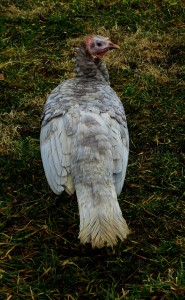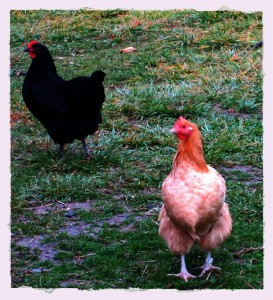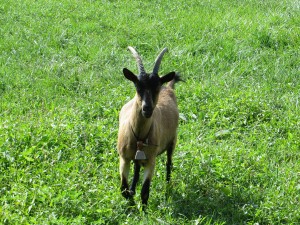You’ve heard of endangered lions, tigers and bears, but endangered chickens? The U.N. Food and Agriculture Organization (FAO) endangered livestock list contains over 1,600 breeds worldwide. Preserving these historic bloodlines is important to maintain genetic diversity in domestic animals, but also may be the key to building better genetics, greater disease resistance and more efficient reproduction on the farm.

My interest in heritage breeds began when I discovered the Livestock Conservancy’s Conservation Priority List for heritage poultry. I realized I had six endangered poultry breeds from that list on my farm: Orpington, Australorp and Wyandotte laying hens, and Royal Palm, Standard Bronze and Blue Slate turkey.
I had originally picked the breeds for their overall hardiness and foraging ability as free rangers, not because they were threatened. As it turns out, many breeds designated “heritage” offer these desirable traits as well as natural endurance and resilience.

The Livestock Conservancy defines heritage breed as a historical livestock breed, rugged and naturally adapted to the local environment over time. For the most part these are animals that thrived before industrial agriculture. The conservancy maintains Conservation Priority Lists for poultry, pigs, cattle, goats, rabbits, horses, asses and sheep. The lists as well as parameters for making the cut are available on their comprehensive website, www.LivestockConservancy.org.
Endangered livestock literacy for farmers

Heritage breeds offer unique fibers and flavors. Navajo-Churro sheep have a double thick fleece that is highly prized for its weight and natural color. Oberhasli dairy goats are heavy milkers with beautiful rust colored coats. Regionally adapted heritage beef cattle breeds are a thrifty bunch that thrive on less-than-lush pastures. My experience raising poultry has proven heritage breeds have a lower death rate and greater longevity than typical farm breeds, without preventative vaccinations or antibiotics.
Bringing heritage breeds back
If you are already raising livestock, adding heritage breeds to your farm is easy. Heritage breeds have no special feed or needs; they just offer additional benefits. Adding heritage breeds to your farm is one way to increase the genetic diversity of your herd or flock.
If you are just getting into livestock, familiarize yourself with general animal husbandry before bringing any animal to your farm. Consider your purpose for raising heritage animals. Are you simply interested in preserving an endangered species, or do you aspire to produce meat, fiber or dairy products?
Feed is the most expensive part of raising animals. Heritage animals tend to be better foragers than industrial breeds, but that doesn’t completely remove their need for high quality hay or grain. Although heritage breeds are thriftier than others, they still require adequate shelter and fenced pasture.
For more information on heritage breeds, beautiful pictures and additional resources, visit the Livestock Conservancy website, www.LivestockConservancy.org.
Related: Rare swine breeds: Are heritage hogs the next niche market?
STAY INFORMED. SIGN UP!
Up-to-date agriculture news in your inbox!













7 Navajo Churro sheep for sale. In Ohio.